
What is Christian Mysticism?
Mysticism is a spiritual discipline and a way of life that seeks direct experience and union with the divine or ultimate reality. It is a phenomenon that has manifested across various religious traditions, including Christianity, Islam, Judaism, Buddhism, and Hinduism. Mystics believe that it is possible to have a profound, transformative encounter with the sacred that transcends intellectual understanding and rational thought.
At the core of mysticism lies the idea that the divine is not merely an external entity but is also present within the depths of the human soul. Mystics seek to uncover this inner divinity through practices such as contemplation, meditation, prayer, and asceticism. They often emphasize the importance of letting go of the ego and surrendering to a higher power or a greater sense of unity.
Within the Christian mystical tradition, there are two main approaches to the divine: apophatic and cataphatic mysticism. Apophatic mysticism, also known as the “via negativa” (negative way), emphasizes the ineffability and unknowability of God. Apophatic mystics believe that God is beyond all human concepts, images, and descriptions. They seek to approach the divine through negation, stripping away all mental constructs and attachments to arrive at a state of pure, undifferentiated awareness. Pseudo-Dionysius, Meister Eckhart, and St. John of the Cross are notable examples of apophatic mystics.
On the other hand, cataphatic mysticism, also known as the “via positiva” (positive way), emphasizes the knowability and accessibility of God through affirmative statements and images. Cataphatic mystics seek to approach the divine through the use of symbols, metaphors, and positive descriptions of God’s attributes. They often engage in practices such as visualization, imagination, and devotional prayer to cultivate a sense of intimacy and union with the divine. Teresa of Avila, Julian of Norwich, and Francis of Assisi are well-known examples of cataphatic mystics.
Despite these different approaches, both apophatic and cataphatic mysticism share the common goal of transcending the ego and experiencing a profound sense of unity with the divine. They recognize that the ultimate nature of reality is beyond the grasp of the rational mind and can only be accessed through a direct, transformative encounter.
Mysticism has had a significant influence on the development of depth psychology, particularly in the work of Carl Jung. Jung saw in mysticism a rich source of insight into the workings of the human psyche and the process of individuation. He recognized that the mystics’ emphasis on the integration of opposites, the symbolism of transformation, and the journey towards wholeness paralleled his own understanding of the psyche and the individuation process.
Christian mysticism has had a significant impact on the development of Jungian psychology. Numerous Christian mystics, including Meister Eckhart, Teresa of Avila, St. John of the Cross, and Simone Weil, emphasized the importance of transcending the ego and experiencing a direct connection with the divine. These experiences frequently involved a sense of unity, love, and compassion, which are also central themes in Jungian psychology.
The Tension Between Christian Mysticism and Institutional Religion:
Christian mysticism, as exemplified by figures such as Meister Eckhart, often stands in tension with the hierarchies and bureaucracy of the institutional church. Mystics emphasize the importance of direct, personal experience of the divine, which can sometimes conflict with the established structures and doctrines of religious institutions.
Meister Eckhart, in particular, challenged the authority of the church by teaching that the ultimate goal of spiritual life was to achieve a state of “detachment” from the ego and a direct experience of God. He believed that this experience was available to all people, regardless of their position within the church hierarchy. Eckhart’s teachings emphasized the individual’s capacity for spiritual growth and the importance of inner transformation, rather than external rituals or adherence to church doctrine.
This emphasis on direct experience and individual spirituality can be seen as a threat to the power and control of religious institutions. The church, as an organization, relies on its ability to mediate between the individual and the divine, and to interpret and enforce religious teachings. Mystics like Eckhart, who encourage individuals to seek God directly and to trust their own spiritual experiences, can be seen as undermining the authority of the church.
Moreover, the mystical experience itself is often difficult to articulate and can be challenging to reconcile with established religious doctrines. Mystics may describe their experiences in ways that seem paradoxical or even heretical to those who are more focused on literal interpretations of scripture or church teachings. This can lead to conflict and tension between mystics and religious authorities, as seen in the case of Meister Eckhart, who was accused of heresy by the church.
However, it is important to recognize that Christian mysticism is not inherently opposed to the church as an institution. Many mystics, including Eckhart, remained committed to the church throughout their lives and saw their teachings as a way of deepening and enriching the Christian faith. They sought to balance the inward journey of personal spirituality with the outward responsibilities of living in a religious community.
In fact, the tension between mysticism and institutional religion can be seen as a creative and necessary one. Mystics serve as a reminder that the ultimate goal of religion is not merely adherence to rules and doctrines, but a transformative encounter with the divine. They challenge the church to remain open to the mystery and complexity of spiritual experience, and to recognize the importance of individual growth and exploration.
At the same time, the church provides a necessary structure and context for the mystical journey. It offers a community of support, a rich tradition of spiritual practices, and a framework for interpreting and integrating mystical experiences. Without the church, mysticism risks becoming a purely individualistic and subjective pursuit, disconnected from the wider community of faith.
The tension between Christian mysticism and institutional religion, then, can be seen as a dynamic and productive one. It challenges both mystics and the church to remain open to the depth and diversity of spiritual experience, while also recognizing the importance of community, tradition, and structure. By embracing this tension and learning from one another, mystics and the church can work together to foster a more authentic and transformative spirituality.
In the context of Jungian psychology, this tension can be understood as a reflection of the broader dynamic between the individual and the collective. Just as the individual must navigate the relationship between their own unique experiences and the shared structures of society, so too must the mystic navigate the relationship between their direct encounter with the divine and the established teachings and practices of their religious tradition.
By exploring this tension and learning to hold the individual and the collective in a creative balance, both Christian mystics and depth psychologists can contribute to a more holistic and integrated understanding of the human spiritual journey.
Who are the most well known Christian mystics?
Meister Eckhart, a 13th-century German theologian and mystic, taught that the ultimate goal of spiritual life was to achieve a state of “detachment” from the ego, allowing for a direct experience of the divine. This concept of detachment is similar to Jung’s idea of individuation, where the individual integrates the conscious and unconscious aspects of the psyche to achieve wholeness.
Teresa of Avila, a 16th-century Spanish mystic, described the spiritual journey as a process of inner transformation, involving the purification of the soul and the ultimate union with God. Her writings emphasize the importance of self-knowledge and the acceptance of one’s shadow aspects, which are key components of Jungian psychology.
St. John of the Cross, a contemporary of Teresa of Avila, wrote extensively about the “dark night of the soul,” a period of spiritual crisis and purification that leads to a deeper understanding of the self and a closer relationship with the divine. This concept is similar to Jung’s idea of the confrontation with the shadow, where the individual must face and integrate the repressed or unconscious aspects of the psyche.
Simone Weil, a 20th-century French philosopher and mystic, explored the concept of decreation, which involves the dissolution of the ego and the acceptance of divine grace. This process is similar to Jung’s idea of individuation, where the individual integrates the conscious and unconscious aspects of the psyche to achieve wholeness. Weil’s writings also emphasize the importance of attention, which she saw as a means of transcending the ego and connecting with the divine. This idea of attention is similar to Jung’s concept of the transcendent function, which facilitates the integration of the conscious and unconscious.
Other Christian Mystics Include:
Jan van Ruusbroec:
Jan van Ruusbroec, a 14th-century Flemish mystic, emphasized the importance of the “common life,” a balance between contemplation and action. His teachings on the union with God through love and the abandonment of the self resonate with Jungian ideas of individuation and the integration of the unconscious.
Johannes Tauler:
Johannes Tauler, a 14th-century German Dominican mystic, stressed the importance of detachment from the world and the surrender of the ego to achieve union with God. His sermons on the “ground of the soul” and the “birth of Christ in the soul” parallel Jung’s concepts of the Self and the individuation process.
Angelus Silesius:
Angelus Silesius, a 17th-century German mystic and poet, explored the paradoxical nature of the divine and the self in his writings. His epigrammatic style and use of symbolism to convey spiritual truths bear similarities to Jung’s approach to the psyche and the role of symbols in the individuation process.
Jakob Boehme:
Jakob Boehme, a 16th-century German mystic, developed a complex cosmology that emphasized the dynamic interplay of opposites in the universe and the human soul. His ideas on the “ungrund” (the unknowable ground of being) and the “seven qualities” of nature share similarities with Jung’s concepts of the collective unconscious and the archetypes.
John Scottus Eriugena:
John Scottus Eriugena, a 9th-century Irish philosopher and mystic, sought to reconcile Christian theology with Neoplatonic philosophy. His concepts of the “division of nature” and the return of all things to God (apokatastasis) resemble Jung’s ideas of the unity of the psyche and the goal of individuation.
Pseudo-Dionysius:
Pseudo-Dionysius, a 5th-century Syrian monk and mystical theologian, wrote on the hierarchical structure of the universe and the soul’s ascent to God through the “via negativa” (the negative way). His apophatic approach to the divine and his emphasis on the role of symbols in spiritual growth find parallels in Jungian psychology.
Amalric of Bena:
Amalric of Bena, a 12th-century French theologian and mystic, taught that God is present in all things and that the soul can achieve union with God through knowledge and love. His pantheistic ideas and emphasis on the transformative power of the intellect share similarities with Jung’s concept of the individuation process.
Gerhard Dorn:
Gerhard Dorn, a 16th-century Belgian alchemist and physician, developed a spiritual interpretation of alchemy that emphasized the transformation of the self. His ideas on the “unio mystica” (mystical union) and the “unus mundus” (one world) anticipate Jung’s later work on the symbolism of alchemy and the collective unconscious.
Zosimos:
Zosimos of Panopolis, a 3rd-century Greek alchemist and mystic, wrote extensively on the spiritual dimensions of alchemy and the transformation of the soul. His use of mythological imagery and his concept of the “divine water” as a symbol of the unconscious prefigure Jung’s understanding of alchemy as a metaphor for individuation.
The Universal Experience and Its Relationship to Neurobiology:
The similarities between mystical experiences across different traditions suggest that there may be a universal aspect to these experiences, rooted in the neurobiology and evolution of the brain. Recent studies in neuroscience have shown that mystical experiences are associated with decreased activity in the default mode network, which is involved in self-referential processing and the construction of the ego.
This suggests that mystical experiences may involve a temporary dissolution of the ego, allowing for a more direct experience of reality and a sense of connection with something greater than oneself. From a Jungian perspective, this could be seen as a connection with the collective unconscious or the Self, the archetype of wholeness and the regulating center of the psyche.
The default mode network is a group of brain regions that are active when an individual is not focused on a specific task, and is associated with self-referential thinking, autobiographical memory, and social cognition. Studies have shown that during mystical experiences, such as meditation or psychedelic states, activity in the default mode network decreases, leading to a reduction in self-referential processing and a sense of ego dissolution.
This neurobiological perspective on mystical experiences is consistent with the teachings of many Christian mystics, who emphasized the importance of transcending the ego and experiencing a direct connection with the divine. It also supports Jung’s idea of the collective unconscious, a universal layer of the psyche that contains archetypes and instinctual patterns of behavior.
Implications for Psychotherapy and the Ego-Self Axis:
The insights from Christian mysticism and Jungian psychology have important implications for psychotherapy. Edward Edinger, a prominent Jungian analyst, developed the concept of the ego-Self axis, which describes the relationship between the ego and the Self (the archetype of wholeness and the regulating center of the psyche).
According to Edinger, the ego-Self axis is a dynamic relationship that evolves throughout an individual’s life. In early childhood, the ego and the Self are undifferentiated, and the child experiences a sense of wholeness and connection with the world. As the ego develops and the child becomes more self-aware, a separation between the ego and the Self occurs. This separation is necessary for the development of a healthy, autonomous ego, but it can also lead to feelings of alienation and disconnection from the deeper aspects of the psyche.
In this framework, psychological distress can be seen as a result of the ego’s separation from the Self, often due to enmeshment with protective parts or complexes. Complexes are emotionally charged clusters of ideas and images that can dominate an individual’s thoughts and behavior, often unconsciously. When the ego becomes identified with a complex, it can lead to a sense of disconnection from the Self and a distorted perception of reality.
The goal of therapy, then, is to facilitate the process of individuation, which involves the integration of the conscious and unconscious aspects of the psyche and a reconnection with the Self. This process can be conceptualized as a hero’s journey, where the individual must confront and integrate the shadow (the repressed or unconscious aspects of the psyche) and ultimately achieve a more authentic and whole sense of self.
Christian mysticism can provide a spiritual framework for understanding this process, with the dissolution of the ego and the experience of divine grace serving as metaphors for psychological transformation. The mystics’ emphasis on transcending the ego and experiencing a direct connection with the divine can be seen as a model for the process of individuation, where the individual moves beyond the limitations of the ego and connects with the deeper aspects of the psyche.
In psychotherapy, this process can be facilitated through various techniques, such as Jungian therapy, parts-based therapy, EMDR, brainspotting, and somatic experiencing. These approaches help individuals become more aware of their unconscious patterns and complexes, supporting the process of individuation and promoting psychological growth and healing.
The Shadow and Its Role in Psychological Transformation:
One of the key concepts in Jungian psychology is the shadow, which represents the repressed or unconscious aspects of the psyche. The shadow is often associated with qualities or impulses that an individual finds unacceptable or inconsistent with their self-image, such as aggression, sexuality, vulnerability or tensions in behavior and persona.
According to Jung, the shadow is a necessary part of the psyche, and integrating it is essential for psychological wholeness. However, confronting the shadow can be a challenging and often frightening process, as it requires acknowledging and accepting the parts of oneself that one would rather ignore or deny.
Christian mystics often spoke of the “dark night of the soul,” a period of spiritual crisis and purification that leads to a deeper understanding of the self and a closer relationship with the divine. This concept is similar to Jung’s idea of the confrontation with the shadow, where the individual must face and integrate the repressed or unconscious aspects of the psyche.
In psychotherapy, working with the shadow can involve exploring dreams, fantasies, and emotional reactions that may be outside of an individual’s conscious awareness. By bringing these unconscious elements into consciousness, individuals can develop a more integrated and authentic sense of self, and improve their relationships with others.
The Process of Individuation and the Hero’s Journey:
The process of individuation, which is central to Jungian psychology, can be seen as a modern version of the hero’s journey, a archetypal narrative found in myths and stories across cultures. The hero’s journey typically involves a protagonist who leaves their ordinary world, faces challenges and obstacles, and ultimately returns home transformed and enriched by their experiences.
In the context of individuation, the ordinary world can be seen as the ego’s limited perception of reality, shaped by social conditioning and personal history. The call to adventure is often a crisis or challenge that forces the individual to question their assumptions and confront the unknown aspects of the psyche.
The challenges and obstacles faced by the hero can be seen as the confrontation with the shadow and other unconscious elements of the psyche. This process often involves a period of disorientation and uncertainty, as the individual grapples with new insights and experiences that challenge their established sense of self.
Ultimately, the hero returns home transformed, having integrated the lessons and insights gained from their journey. In the context of individuation, this corresponds to a more integrated and authentic sense of self, where the ego is in a more balanced relationship with the Self, and the individual is better able to navigate the challenges of life with increased self-awareness and resilience.
The Role of Symbols and Archetypes in Psychological Growth:
Jungian psychology places a strong emphasis on the role of symbols and archetypes in the process of psychological growth. Symbols are images or objects that have a deeper meaning beyond their literal representation, often connecting the conscious mind with the unconscious.
Archetypes, according to Jung, are universal patterns or images that are present in the collective unconscious and shape human behavior and experience. Examples of archetypes include the hero, the mother, the wise old man, and the trickster.
In psychotherapy, working with symbols and archetypes can help individuals access the deeper layers of the psyche and facilitate the process of individuation. Dreams, for example, often contain symbolic images that can provide insights into an individual’s unconscious thoughts and feelings.
Similarly, exploring archetypal patterns in an individual’s life can help them understand the broader context of their experiences and connect with the universal aspects of the human journey. This can be particularly helpful in times of transition or crisis, when individuals may feel lost or disconnected from their sense of purpose.
Christian mysticism is rich in symbolic language and archetypal imagery, with figures such as the Christ, the Virgin Mary, and the saints serving as powerful representations of spiritual transformation and wholeness. By engaging with these symbols and archetypes, individuals can deepen their understanding of the psychological and spiritual dimensions of their lives.
Integrating Spirituality and Psychology:
The integration of spirituality and psychology is a central theme in Jungian thought, and it has important implications for psychotherapy. Jung believed that the psyche has a natural tendency towards wholeness and that the process of individuation is inherently spiritual in nature.
By recognizing the spiritual dimensions of the psyche, therapists can help individuals connect with a sense of meaning and purpose that goes beyond the limitations of the ego. This can be particularly important in times of crisis or transition, when individuals may feel disconnected from their sense of self and the world around them.
Integrating spirituality into psychotherapy does not necessarily require adherence to a specific religious tradition. Rather, it involves an openness to the transcendent and the numinous aspects of human experience, and a willingness to explore the deeper layers of the psyche.
This can involve working with dreams, symbols, and archetypes, as well as encouraging individuals to engage in practices such as meditation and mindfulness. By creating a space for spiritual exploration within the therapeutic relationship, therapists can support individuals in their quest for wholeness and self-discovery.
Lessons for the Future:
The insights from Christian mysticism and Jungian psychology offer a rich foundation for understanding the nature of the self, the process of psychological growth, and the potential for spiritual transformation. By recognizing the universal aspects of mystical experiences and their roots in neurobiology, we can develop more effective approaches to psychotherapy that facilitate individuation and promote wholeness and well-being.
Edward Edinger‘s ego-Self axis offers a framework for understanding the relationship between the ego and the deeper aspects of the psyche. By supporting individuals in their journey of individuation, therapists can help them navigate the challenges of life with increased self-awareness and resilience.
Ultimately, the integration of spirituality and psychology in psychotherapy has the potential to promote profound healing and transformation. By honoring the spiritual dimensions of the psyche and creating a space for exploration and growth, therapists can support individuals in their quest for meaning, purpose, and wholeness.
As we continue to explore the intersections of religion, psychology, and neuroscience, we can deepen our understanding of the human experience and develop more effective approaches to mental health and well-being. The insights of Christian mystics and Jungian thinkers offer a valuable starting point for this ongoing exploration, inviting us to embrace the mystery and potential of the psyche in all its complexity and beauty.
Bibliography:
Amalric of Bena Capelle, P. (1948). Amaury de Bène. Librairie Philosophique J. Vrin.
Angelus Silesius Angelus Silesius. (1932). The Cherubinic Wanderer. Paulist Press. Delong, J. B. (1986). The mystical poetry of Angelus Silesius. Archon Books.
Gerhard Dorn Dorn, G. (1602). Artificii chymistici physici, metaphysicique, secunda pars & tertia. Typis Conradi Waldkirch. Principe, L. M. (2013). The secrets of alchemy. University of Chicago Press.
Jakob Boehme Boehme, J. (1920). The way to Christ. Harper & Brothers. Stoudt, J. J. (1957). Sunrise to eternity: A study in Jacob Boehme’s life and thought. University of Pennsylvania Press.
Jan van Ruusbroec Mommaers, P. (1989). The mysticism of Jan van Ruusbroec. Peeters Publishers. Ruusbroec, J. (1985). The spiritual espousals and other works. Paulist Press.
Johannes Tauler Tauler, J. (1961). Sermons. Paulist Press. Gnädinger, L. (1993). Johannes Tauler: Lebenswelt und mystische Lehre. C.H.Beck.
John Scottus Eriugena Carabine, D. (2000). John Scottus Eriugena. Oxford University Press. Eriugena, J. S. (1987). Periphyseon: On the division of nature. Bellarmin.
Meister Eckhart Eckhart, M. (2009). The complete mystical works of Meister Eckhart. The Crossroad Publishing Company. McGinn, B. (2001). The mystical thought of Meister Eckhart: The man from whom God hid nothing. The Crossroad Publishing Company.
Pseudo-Dionysius Pseudo-Dionysius. (1987). The complete works. Paulist Press. Rorem, P. (1993). Pseudo-Dionysius: A commentary on the texts and an introduction to their influence. Oxford University Press.
Simone Weil Pétrement, S. (1976). Simone Weil: A life. Pantheon Books. Weil, S. (2009). Waiting for God. Harper Perennial Modern Classics.
St. John of the Cross John of the Cross. (1979). The collected works of St. John of the Cross. ICS Publications. Thompson, C. P. (1999). St. John of the Cross: Songs in the night. Catholic University of America Press.
Teresa of Avila Avila, T. (1976). The collected works of St. Teresa of Avila (Vol. 1). ICS Publications. Medwick, C. (1999). Teresa of Avila: The progress of a soul. Image Books.
Zosimos of Panopolis Mertens, M. (1995). Les alchimistes grecs: Zosime de Panopolis. Les Belles Lettres. Zosimos. (2015). On the letter omega. In B. P. Copenhaver (Ed.), The book of magic: From antiquity to the Enlightenment (pp. 36-41). Penguin Classics.
Jung, C. G. Jung, C. G. (1968). Psychology and alchemy. Princeton University Press. Jung, C. G. (1969). The structure and dynamics of the psyche. Princeton University Press. Jung, C. G. (1970). Mysterium coniunctionis: An inquiry into the separation and synthesis of psychic opposites in alchemy. Princeton University Press. Jung, C. G. (1983). The essential Jung. Princeton University Press.
Edinger, E. F. Edinger, E. F. (1972). Ego and archetype: Individuation and the religious function of the psyche. Shambhala. Edinger, E. F. (1985). Anatomy of the psyche: Alchemical symbolism in psychotherapy. Open Court.
Learn More:
Taproot Therapy Collective Podcast
Mystics and Gurus










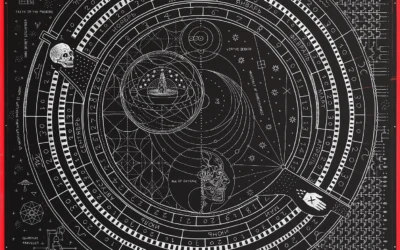


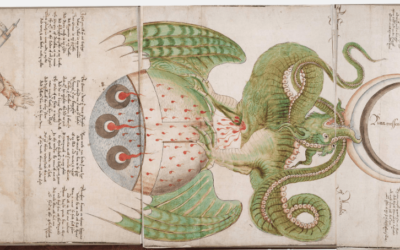


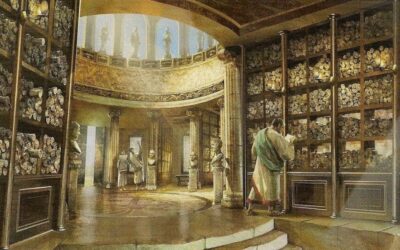
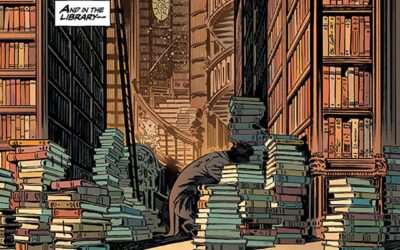


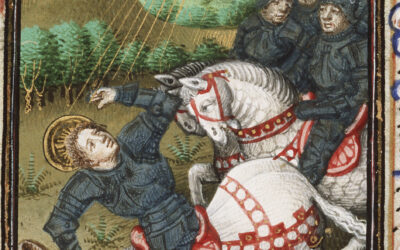
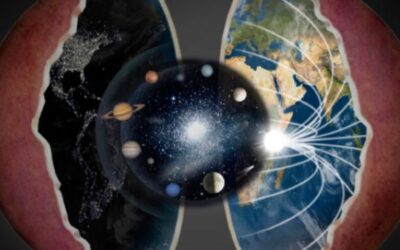



0 Comments